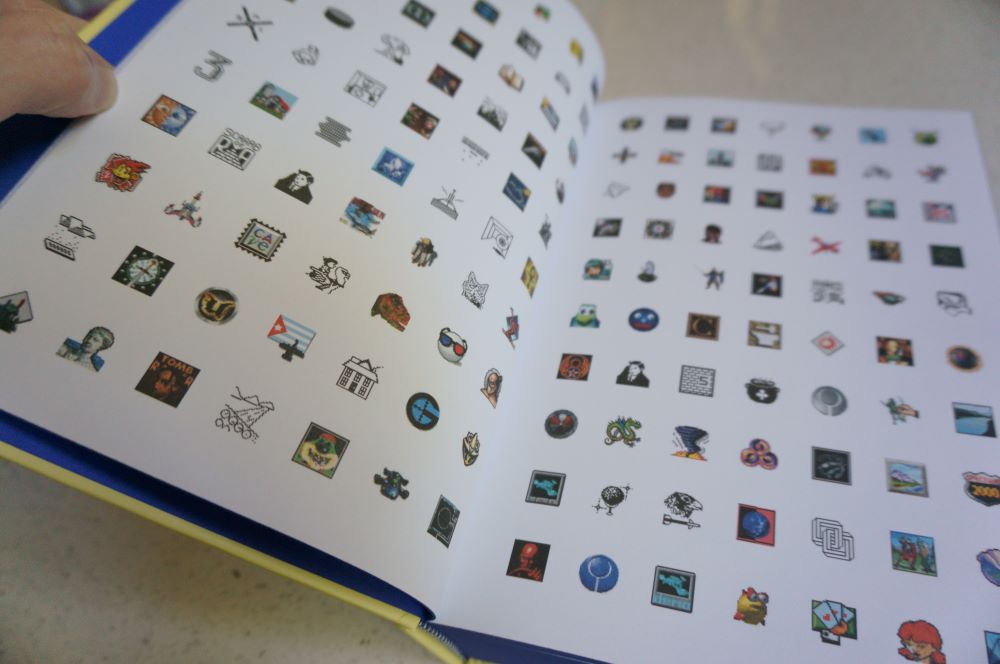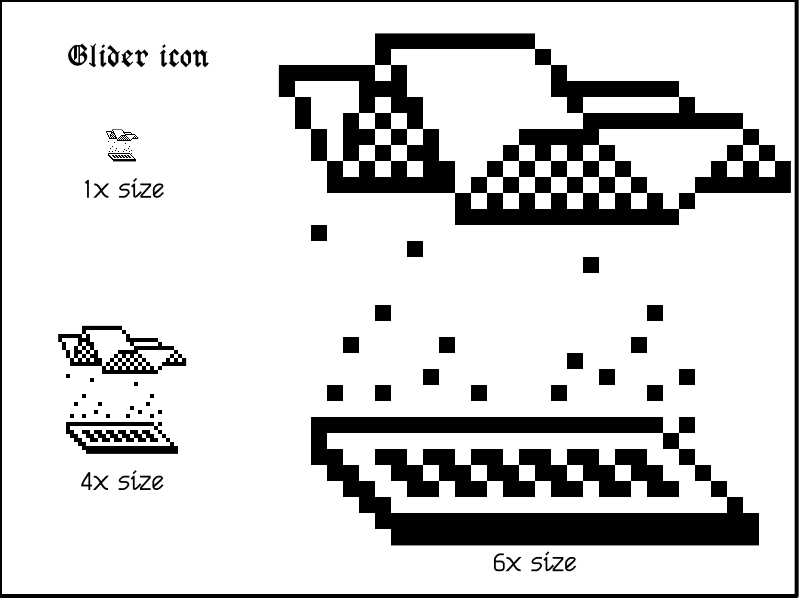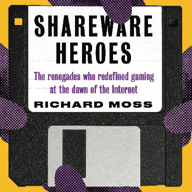
@MossRC I love the TED talk she did a few years ago. Modern operating systems don't feel as discoverable as they did in the 90s.

Glider was often called the quintessential Mac game, and for good reason — it hard charm, whimsy, quirkiness, and a friendly, open sense of discoverability about it. And creator John Calhoun managed to squeeze it down to 32 pixels by taking his paper plane sprite, a heating vent (used in the game to provide lift, so that the plane can return to the top of the screen for a fresh descent), and some dots to visualise the air currents — everything you need to know about how the game works. Plus it looks fantastic.

- replies
- 0
- announces
- 5
- likes
- 20
@MossRC I can recognise some of them! ;-)
When I was really young, my father, a teacher, would bring me with him to his school and while he was preparing his courses I would spend hours looking at Macintosh illustrations printed in a binder (teachers would insert these on exercise sheets).
We have found a few of them here: https://egardepe.itch.io/hypercardgraphics but many are missing. Do you know by any chance where I could find more of these great #Macintosh illustrations? #Hypercard

@MossRC I LOVE, love love love the personality of the early Mac era. Susan Kare deserves tremendous credit, and the whole community carried it forward.
@MossRC Agreed. I don’t want to ascribe any magic powers to a specific person or team, but a HyperCard stack from 1990 has so much more personality and whimsy than most things made in 2020 and beyond.
@MossRC I genuinely think there was something to Microsoft Bob. Even if it's Microsoft's laughing stock, the point was that it presented common tasks in a way people totally new to computers could understand. Now, those tasks just get hidden away, where even power users struggle to find them.
@jesse @MossRC same here, which is the reason behind my YouTube channel. I didn't find much time to develop it in these last months, but I plan to present softwares and games from the era. I absolutely get the sense that I was pretty lucky to have gotten my first introduction to computers in that time. Many people as old or older as me jumped on board in the mid 90's of even later.
@yrochat @MossRC I've started to compile MacPaint collections but it's quite hard to find. That specific bicycle I'm half sure was reused in my MS Basic 2.0 book (in French) and it was pretty frustrating that they had an example program to type in that used it, but the book didn't provide the image at all other than just showing it on paper.
@MossRC Thank you for this answer. It gives me hope!
@MossRC Beautiful work of art
